A History Of Watch Fairs And How Watches & Wonders Became The Industry’s Main Stage
Tracing the rise, fall, and evolution of watch fairs from Medieval trade shows to Geneva’s biggest flex of the year.
It’s that time of year again—when the watch world descends on Geneva and hundreds of brands unveil the stallions they’ve kept in the stables all winter. Okay, maybe that’s not the right metaphor—but you get it. It’s watch fair season. And ever since 2022, Watches & Wonders has been the headlining act.
Despite its best efforts to eschew the term “fair,” let’s call it what it is—a fair. But this isn’t the kind of fair we Americans usually picture. There are no giant pumpkins, no horse pulls, no apple crisp or blooming onion stands. (Well, there were those bratwursts at Baselworld that I never had the pleasure to enjoy).

Watches & Wonders is the watch world’s Met Gala, our Paris Fashion Week. Yes, there are other fairs: Windup Watch Fair, Dubai Watch Week, Madison Avenue Watch Week, Geneva Watch Days and we can’t forget about the parallel running Time To Watches… but this is the one. The one we all make predictions about, the one the brands save their best for.
Yet it hasn’t always been this way. So how did this fair start? And before you even say it—it goes back long before the Wi-Fi stopped working at Baselworld.
The evolution of watch fairs mirrors the dynamic history of horology itself, reflecting shifts in technology, fashion, and global economics. These gatherings haven’t just showcased timepieces—they’ve shaped trends, guided consumer preferences, and, in some cases, changed the course of watchmaking history.
The Beginning of Fairs
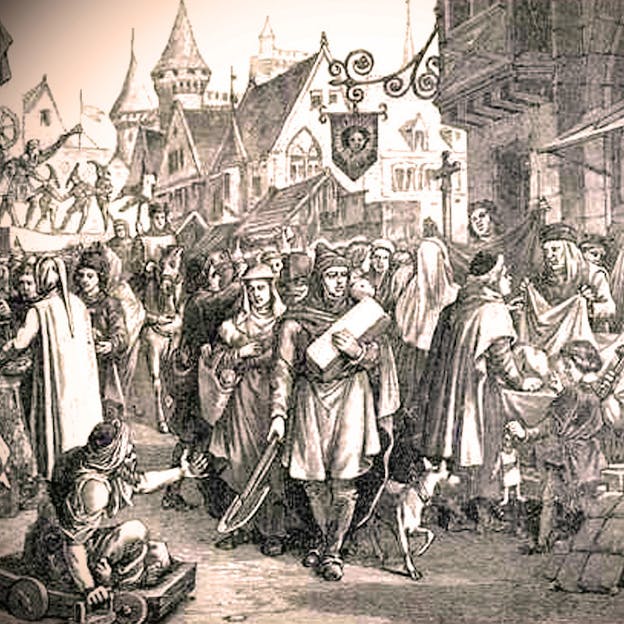
From the very beginning—think antiquity—fairs differed from markets, which were mostly meant for picking up bread, cheese, and whatever else your neighbor was growing or butchering. But fairs had bigger ambitions. These weren’t your run-of-the-mill mom-and-pop stands. They were hubs for merchants to stock up, bulk-buy, and head home with goods to flip. Call it early wholesale—sans the Kirkland joggers and $1.50 glizzys.
Fast-forward to the Crusades. As infrastructure improved with better roads, smarter horse rigs, and sturdier wagon wheels (shoutout to the humble iron ring) travel by land, river, and sea became a whole lot more doable. Trade routes opened up. And as goods flowed, so did ideas, connections, and influence.
As goods were now able to travel long distances, tradesmen (and women) were able to link up like they never could before. And we know what it’s like when a watch person runs into another watch person, sparks fly. It was no different back then. See we haven’t changed that much after all this time.
These artisans—your goldsmiths, silversmiths, haberdashers, and drapers banded together into guilds. And it wasn’t just for the vibes or to share their latest steel sword design, but for protection. It was generally advised to avoid getting shaken down by bandits or bled dry by toll collectors.
By the late Middle Ages, these tradesmen and artisans weren’t just traveling salesmen anymore. Thanks to innovations like promissory notes (basically medieval IOUs that banks could honor across distances), tradesmen became full-on businessmen. Transactions multiplied. Risk spread. And just like that, a form of capitalism started to take root—not in some boardroom, but in the bustle of a fairground.
And there it is: the foundation of the modern fair. What started as a practical way to buy wholesale turned into an international melting pot of commerce, culture, and capital. Makes you think about that apple pie contest a little differently now, doesn’t it?
Swiss Fairs
Sorry, history class isn’t over just yet. But to really understand how we got here, we’ve got to spend a little more time in Geneva. Because Switzerland didn’t just play a role in the story of fairs—it helped shape the version that included precious metals and eventually, watches. Shocker I know.
By the late 1200’s, Geneva’s fairs were already glinting with gold and silverware, laying the foundation for the city’s long-standing reputation for fine craftsmanship. Skip ahead a few hundred years to the 1500s, and Geneva started producing watches but there was a catch. The local market wasn’t exactly booming. So those early timepieces were packed up and sent out, destined for buyers far beyond Swiss borders.
Faced with limited local prospects, Geneva’s merchants hit the road. Out of both ambition and necessity, they started showing up at major European fairs in places like Reims, Troyes, Cologne, and Leipzig. By the 1590s, they were even making their way to Constantinople, expanding their reach eastward. By the 18th century, these fairs became key entry points into the broader European market, allowing Swiss watchmakers to stand on their own feet and tell their own stories, one tick at a time.
This is part of the reason that Swiss watchmaking became so successful, it never relied on local markets. Swiss watches were always an export product.
Throughout the 19th century, regional events started to bloom, helped along by local industrial associations that were eager to flex their contributions. Geneva began hosting regular exhibitions focused specifically on watchmaking and jewelry, while Neuchâtel followed suit with a notable fair in 1881.
Neuchâtel had already made waves earlier, hosting a watchmaking exhibition in 1863 that conveniently coincided with the Swiss Shooting Festival (because, why not?). By 1879, a mechanics section had been added, and from that point forward, specialization took over.
La Chaux-de-Fonds, already a hotbed of horological innovation, leaned all the way in with its National Watchmaking Exhibition and International Exhibition of Machines and Tools Used in Watchmaking. Geneva kept pace, hosting the International Exhibition of Watchmaking, Jewelry, and Related Fields in 1888—an event that hinted at just how global, and focused on watchmaking, these fairs were becoming.
Basel Opens Its Doors
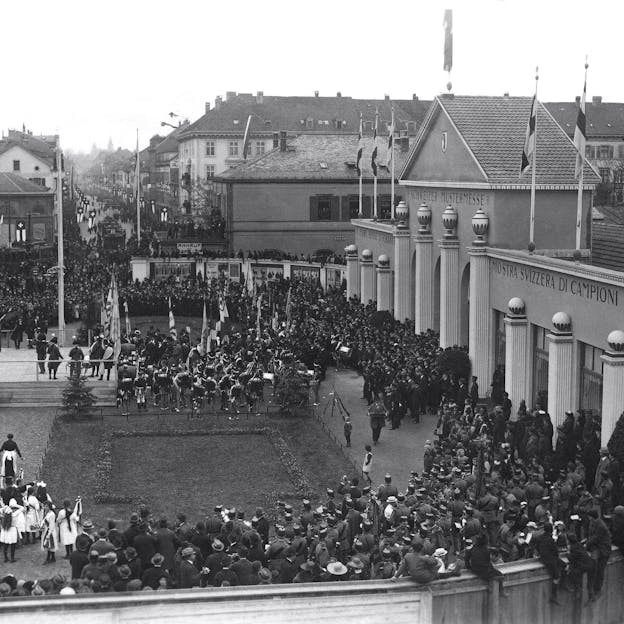
In 1917, Mustermesse Basel was launched with over 800 companies across all sectors, including a section just for watchmaking and jewelry. Mustermesse essentially translates to “sample” or “trade” fair. You may be asking yourself why Basel. Basel might be Switzerland’s third-largest city after Zurich and Geneva, but when it comes to watches, it’s not exactly front of mind. Unlike Geneva, La Chaux-de-Fonds, or Bienne, Basel’s real reputation lies in two things: pharma and fairs.
Its trade fair roots run deep — over 500 years deep, actually. The city held its first official fair in 1471, thanks to Emperor Frederick III (with a little papal push from Pope Pius II, who apparently had a soft spot for Basel). Sitting right on the Rhine and smack at the crossroads of Switzerland, Germany, and France, it was the perfect pit stop for merchants hauling goods across Europe.
It’s at this point we see the transition from a “goods” show to a “sample” show. From 1917 on, it wasn’t just about bringing goods for sale, but now it was about showing product samples and taking orders from retailers. The evolution of the industry was in full swing.
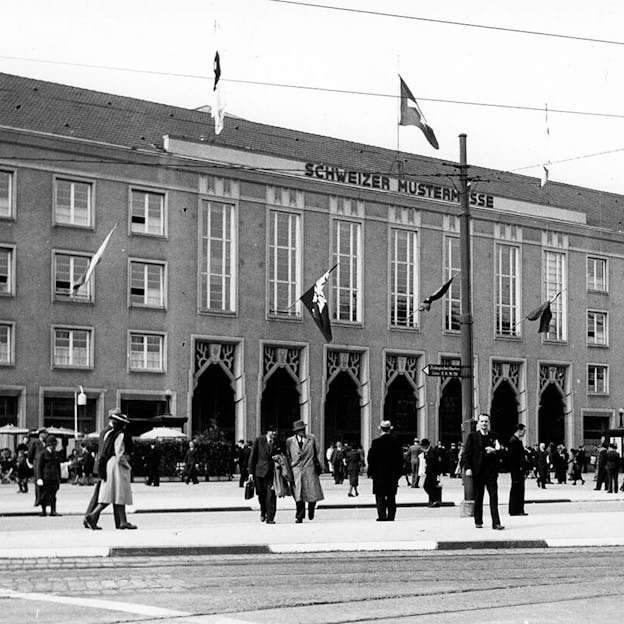
Then in 1942 Geneva celebrated its 2,000th birthday by throwing a massive watchmaking exhibition which was originally intended as a one-off. It is important to note that 1942 wasn’t exactly a prime time to be pushing the luxury field, as WWII was in full swing and the Americans entering the European front.
This new fair was called the Geneva Watches & Jewelry Fair, or better known as Montres et Bijoux. The event was such a hit that it ran for the next 40 years, popping up in museums, hotels, and eventually traveling abroad. By the early ’60s, it was already being called the most important event of the industry. A 40 year long birthday party isn’t too shabby if you ask me.
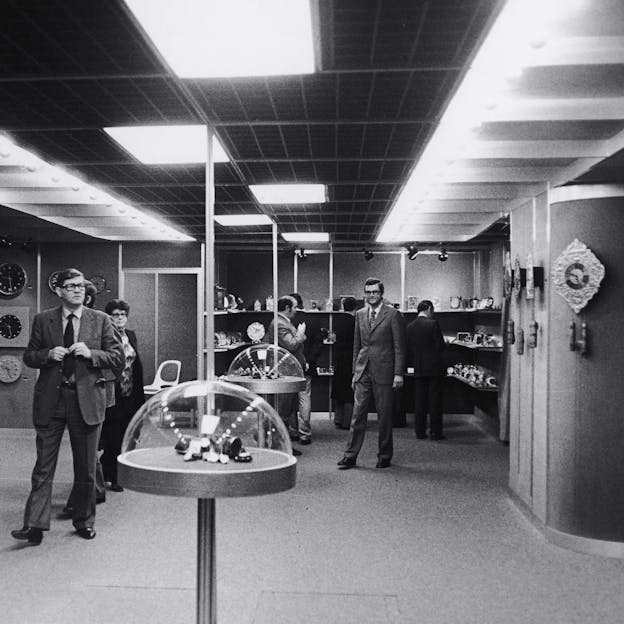
This event was different from Basel, but both competed throughout most of the century to be the premier fair in the watchmaking world. In 1991 Montres et Bijoux would evolve into the launch of the Salon International de la Haute Horlogerie (SIHH), a more exclusive affair held at Palexpo, focused on high-end brands and tailored to the luxury market.
Meanwhile Mustermesse Basel, rebranded, and evolved, becoming the European Watch and Jewelry Show in 1973, Basel in 1983, and finally Baselworld in 2003.
A Special Year — 1979
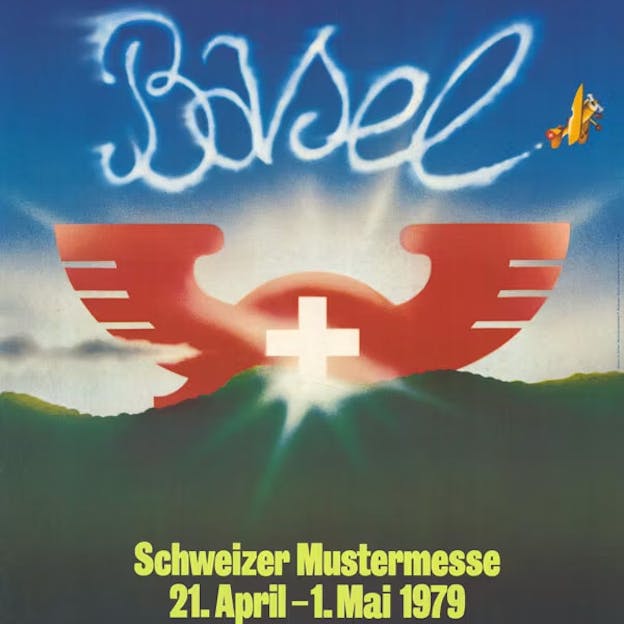
I think all of this—the spectacle, the showmanship, the pressure to impress—really started during that era we don’t like to talk about. You know the one. The age of Voldemort. The Quartz Crisis.
If you’re craving some horological gonzo journalism, I highly recommend Joe Thompson’s piece about his first trip to Basel in 1979. That was the year the world met the Concord Delirium—the thinnest quartz watch ever made (at the time). It debuted at Basel, and with it came a shift: this wasn’t just a fair anymore, it was a battleground. A place to bring out the big guns.
At the time, Basel still featured industries outside of watchmaking, and the watch scene itself was still predominantly Swiss. As Thompson wrote, “None of the other combatants in the quartz watch revolution—the Japanese, American, or Hong Kong watch producers—were allowed in. There were some French and German watch firms; the show had opened its doors to France, Germany, Italy, and Great Britain in 1973. But none of those countries was a watch power.”
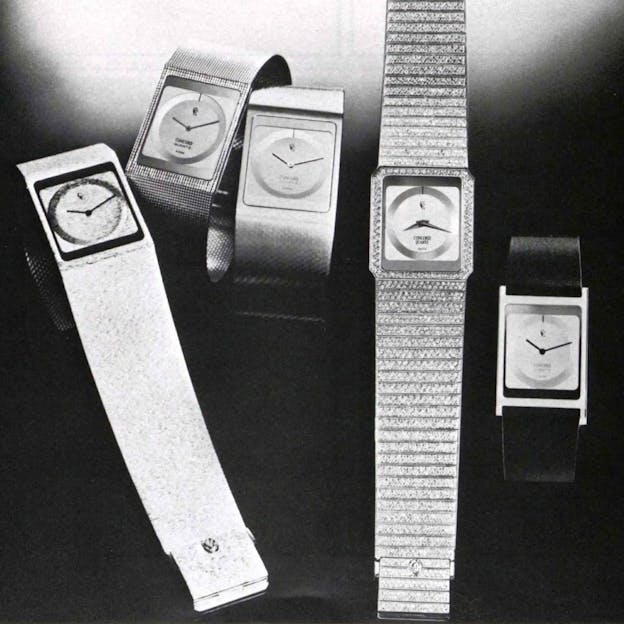
Beyond the international tension, there was also a serious internal rift. Some Swiss brands were racing toward quartz innovation, while others were digging in their heels, clinging to tradition. Layoffs were mounting, but the facade of progress had to be maintained. Press kits, factory tours, smoke and mirrors—anything to keep the media occupied. The story wasn’t always falling into your lap like a Watergate special.
Still, the cracks were obvious. “You didn’t have to be Woodward or Bernstein to figure out that these guys were in deep trouble due to the quartz crisis,” Thompson wrote. “It was in the FH data, which I pored over like a monk studies Scripture. It was on people’s minds and, if you asked, on their lips. In a crisis, I found, people want to talk. What’s more, the Swiss were not only fighting the Japanese, Hong Kong and the Americans. They were fighting each other.”
That’s what sometimes gets forgotten in the glitz of these shows: it’s not just a place to launch new products—it’s a meeting of minds. A clash of generations, cultures, and philosophies, all orbiting around one thing: watches.
And the ripple effects of that 1979 show are still felt today.
There’s a passage from Thompson’s piece that sticks with me. You might recognize a few of these names—they’re still shaping the industry, still being challenged by a new wave of thinkers.
“At Omega, a new generation was challenging the old. At the show, I learned about the ‘Young Turks,’ as they were called. They were younger managers agitating for greater and faster change within SSIH, Switzerland’s second-largest group, whose dominant brand was Omega, and also included Tissot. I met their leader Fritz Ammann, and Max Imgrüth. Another member was Gino Macaluso. (Later that year, they would be joined by Jean-Claude Biver.)
The Young Turks didn’t win. They all eventually left Omega or Tissot—but not quietly. Imgrüth went on to Swatch. Macaluso bought Girard-Perregaux. Biver? You know the list: Blancpain, Omega, Hublot, TAG Heuer. Omega’s own comeback wouldn’t happen until Hayek formed SMH (later the Swatch Group) and put Nicolas G. Hayek and Ernst Thomke in charge.”
Time is a flat circle, indeed.
From Basel to Watches & Wonders
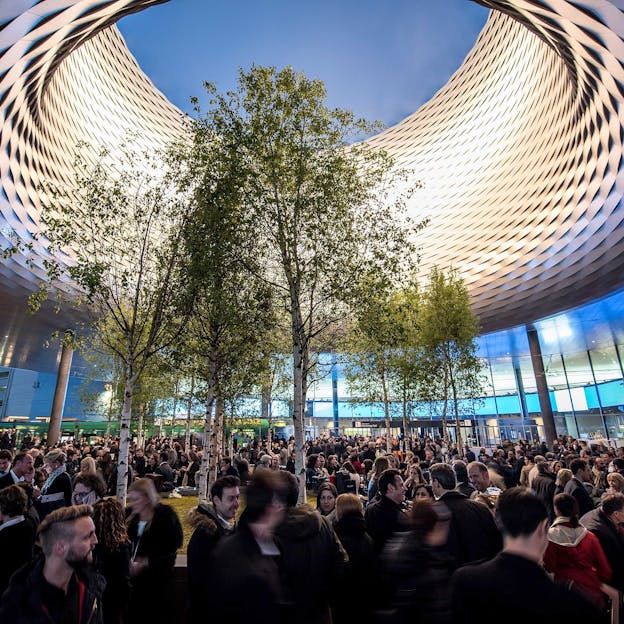
So how did we go from Baselworld—the undisputed king of watch fairs to Watches & Wonders. Well, like most things in watchmaking, it wasn’t a quick pivot. It was more of a slow, painful unraveling.
Baselworld had been the watch fair for generations. It was where brands pulled out all the stops, unveiled their biggest novelties, and competed for buzz in cavernous, overbuilt booths that looked more like luxury department stores than trade stands. But behind the scenes, tension had been building for years. Brands had already started shifting away from using these fairs as order-taking hubs for retailers. Instead, they were leaning into direct-to-consumer models, building relationships through boutiques, online platforms, and their own curated events.
High costs, inflexible organizers, and a general resistance to change began to wear on brands—especially the big ones. It all came to a head in 2018 when the Swatch Group (Omega, Breguet, Blancpain, Longines, Tissot, etc.) pulled out, citing the absurd expense and lack of modernization. That was the first major crack in the foundation. Unfortunately, the bratwursts alone could not keep the event afloat.
While Basel was struggling to keep brands coming back and the press connected to the Wi-Fi, there was a traveling watch show called Watches & Wonders that started in 2013 and ran to 2020. This essentially became the online replacement “show” for SIHH.
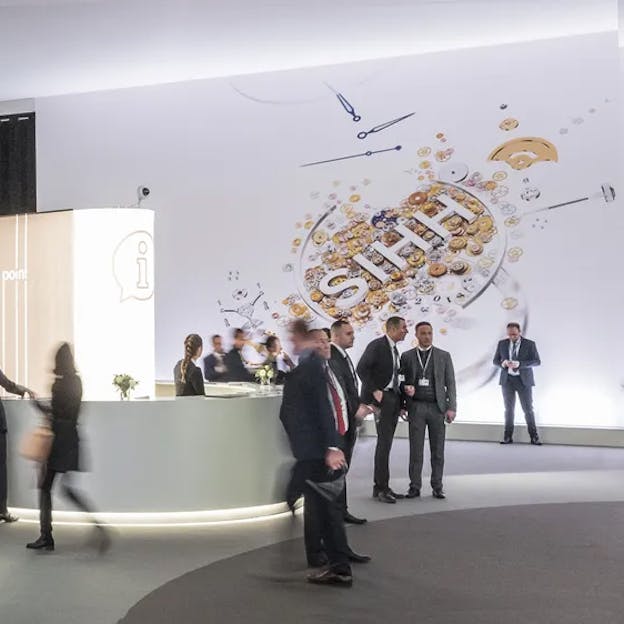
Then came the pandemic.
By 2020, Rolex, Patek Philippe, Tudor, Chopard, and Chanel announced they were leaving Baselworld. Not just leaving, but starting something new. Alongside the Fondation de la Haute Horlogerie (FHH), they helped reformat and relaunch what was formerly SIHH into a broader, more inclusive event: Watches & Wonders Geneva.
Where SIHH had once been a closed-door, invite-only event for Richemont brands, Watches & Wonders became the new platform for both legacy and independent names to show their work under one roof, digitally at first, then in full swing by 2022.
And so, in true watch-world fashion, the baton passed. The era of Baselworld ended not with a bang, but with a slow, awkward fadeout. And Watches & Wonders took its place—not just as a new fair, but as a new model. Less about raw spectacle, more about storytelling. Less about flexing the size of your booth and selling to retailers, more about connecting with collectors, press, and peers in a space that actually feels like it’s evolving.

Will it stay that way? Who knows. But for now, Watches & Wonders is the show. The main stage. The place where the industry sets the tone for the year.
With Watches & Wonders 2025 just hours away, the entire watch world is locked into jam-packed schedules with executives, watchmakers, collectors, journalists. There are dinners to attend, shoulders to rub, old friends to catch up with. For an industry as global as this one, it still feels remarkably familial — complete with rivalries, past feuds, makeups, and long-standing respect all tangled together in a spring-driven, tourbillon-filled week of horological exuberance.
It’s basically a family reunion. The kind where your cousin who you haven’t seen since you were seven, shows up out of nowhere flashing a new toy and a smug grin.
And honestly? I’m here for it. Call it what you want, but this evolution from goods show to sample show to a full-blown spectacle of chest-puffing bravado, tight-knit rivalry, mutual respect, and a strange kind of love, absolutely fascinates me. I’m not big on confrontation, but competition? That’s my sweet spot. And let’s be honest, I love a bit of brashness. A little swagger never hurt anyone.
If you’ve got the goods, if you’re truly the best—then step up and show us. I can’t wait to see what the brands bring this year. Give us your best shot.

